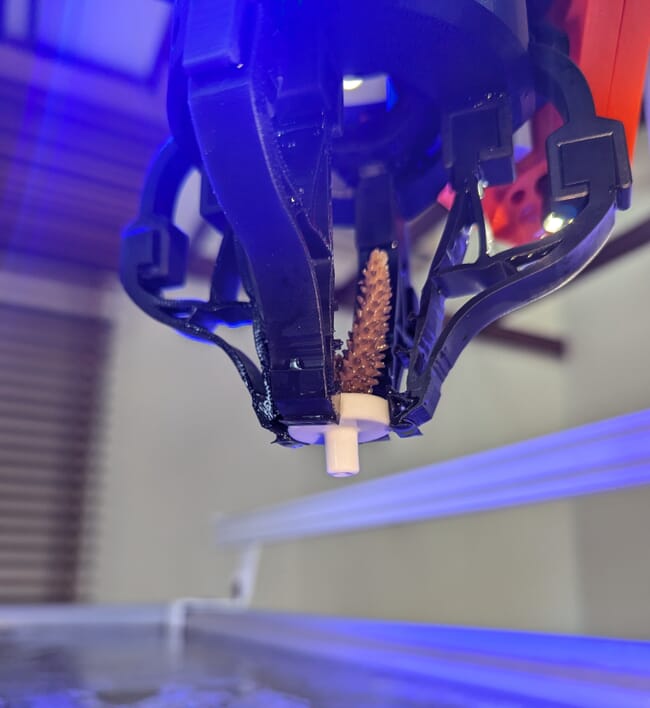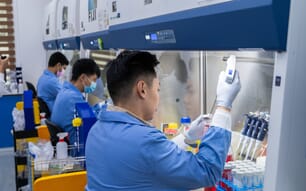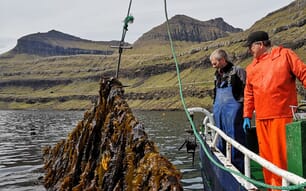
The soft robotic hand transporting a baby coral © CHARM
The technology, developed by scientists at CSIRO, Australia’s national science agency, is part of a collaboration with CHARM (Coral Husbandry Automated Raceway Machine) and the Beyond Coral Foundation. The robotic hand, or gripper, replicates the dexterity of human hands, allowing it to safely handle fragile coral tissue. Attached to the CHARM robot, the gripper promises to revolutionise coral farming by automating the labour-intensive task of transferring corals between tanks.
"Cultivating hundreds or thousands of coral colonies in laboratories requires meticulous handling. This gripper allows us to automate that process, reducing labour while maintaining precision, which is crucial for global reef restoration efforts," explained Dr Josh Pinskier, a soft robotics scientist at CSIRO, in a press release.
Traditional robotic designs often struggle in saltwater environments, but the CSIRO team overcame this challenge by 3D printing the gripper using a combination of hard polymer and soft rubber, ensuring durability and resistance to corrosion. The AI-powered generative design process used to create the gripper optimised its structure for both strength and gentleness, enabling it to handle corals of varying sizes.
Sarah Baldwin, a mechatronics engineer who contributed to the design, emphasised its versatility. “The gripper is not only effective for handling coral but can support other tools, like brushes for algae removal, making it an integral part of streamlining coral farming operations,” she said.
Stephen Rodan, inventor of CHARM and President of the Beyond Coral Foundation, praised the innovation’s potential. “This marks the first time in history that a robotic system has safely transferred coral colonies using a soft robotic gripper. The next challenge will be designing tools to return the corals to their natural habitats," he said.
With reefs around the globe under threat from climate change and human activity, this innovation offers a vital new tool in the fight to restore marine ecosystems at scale.




